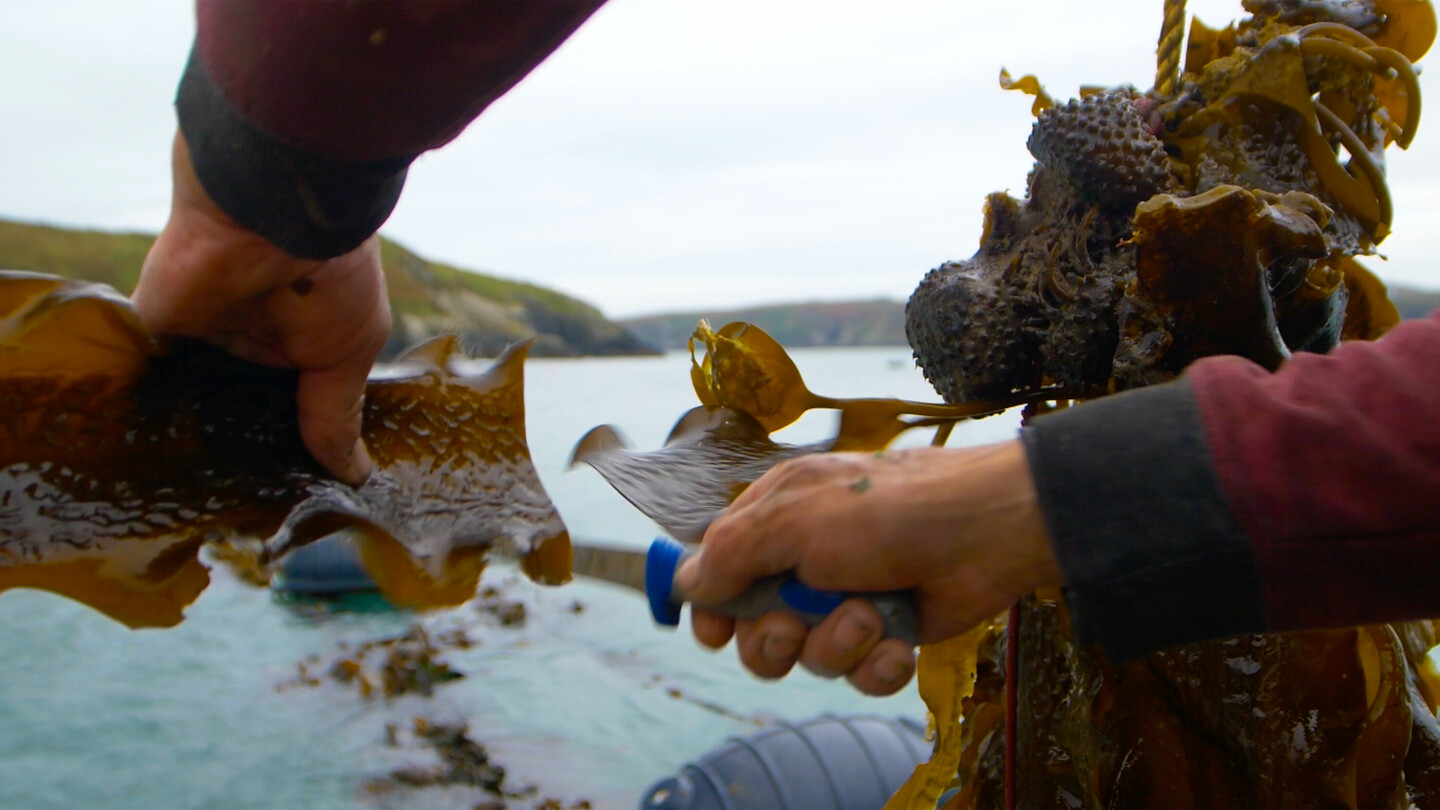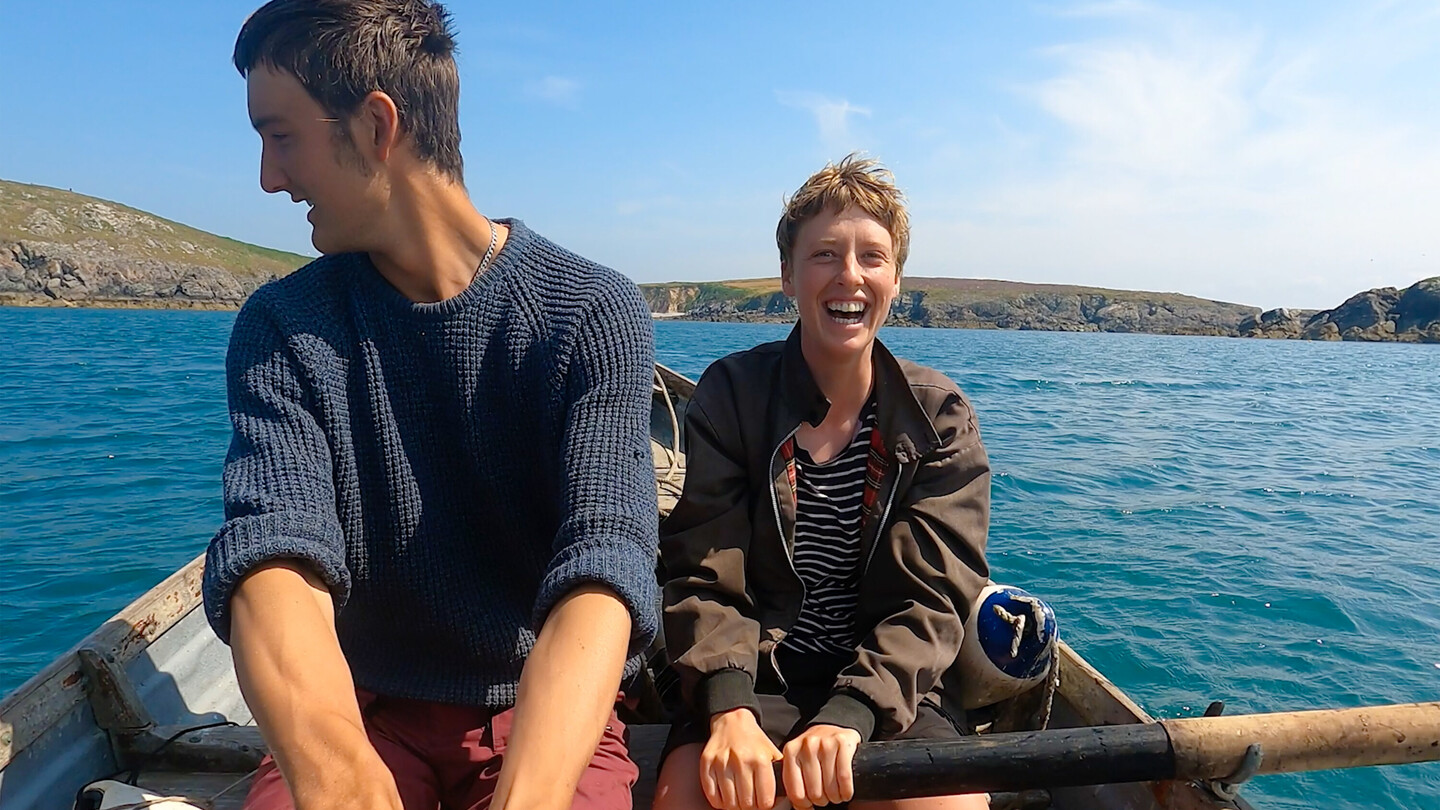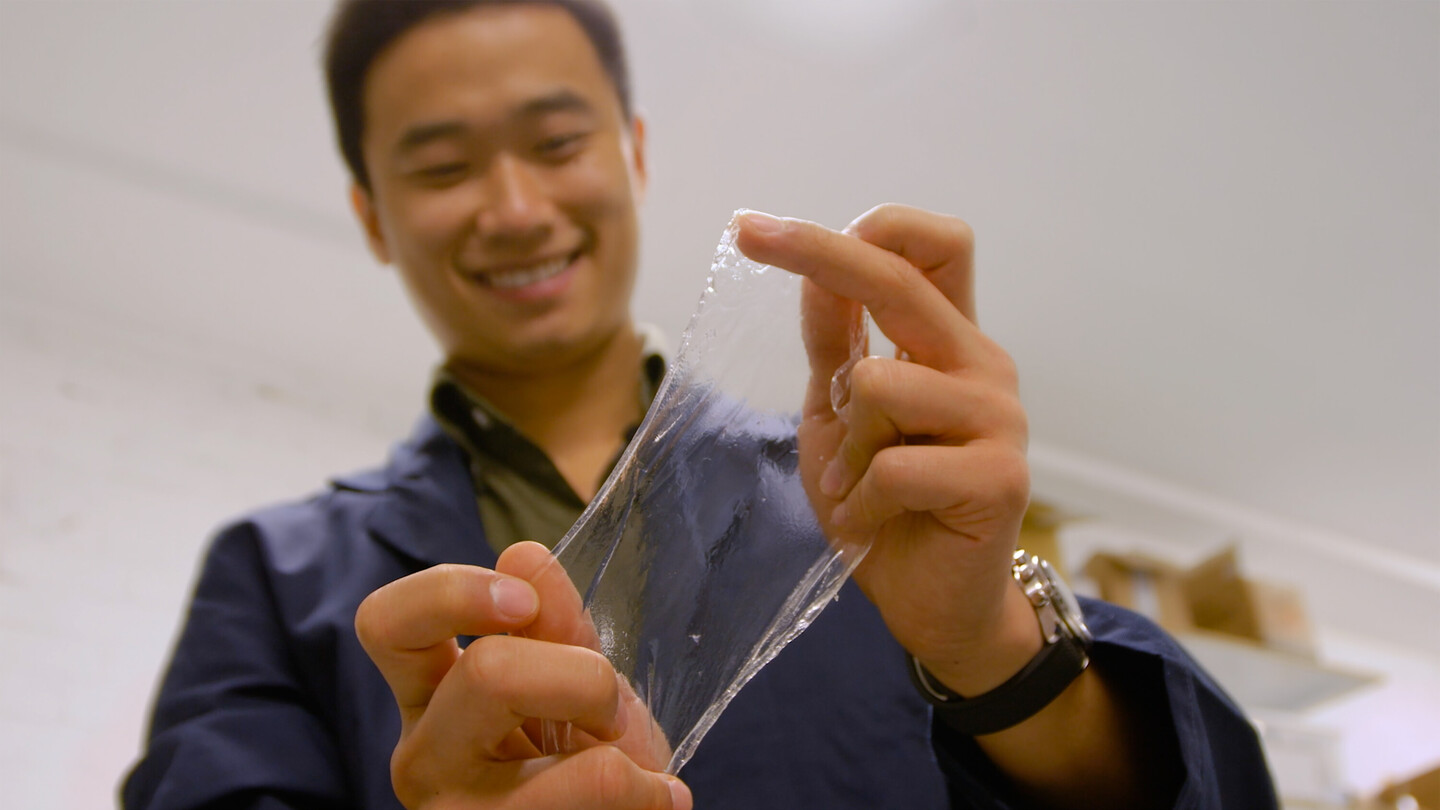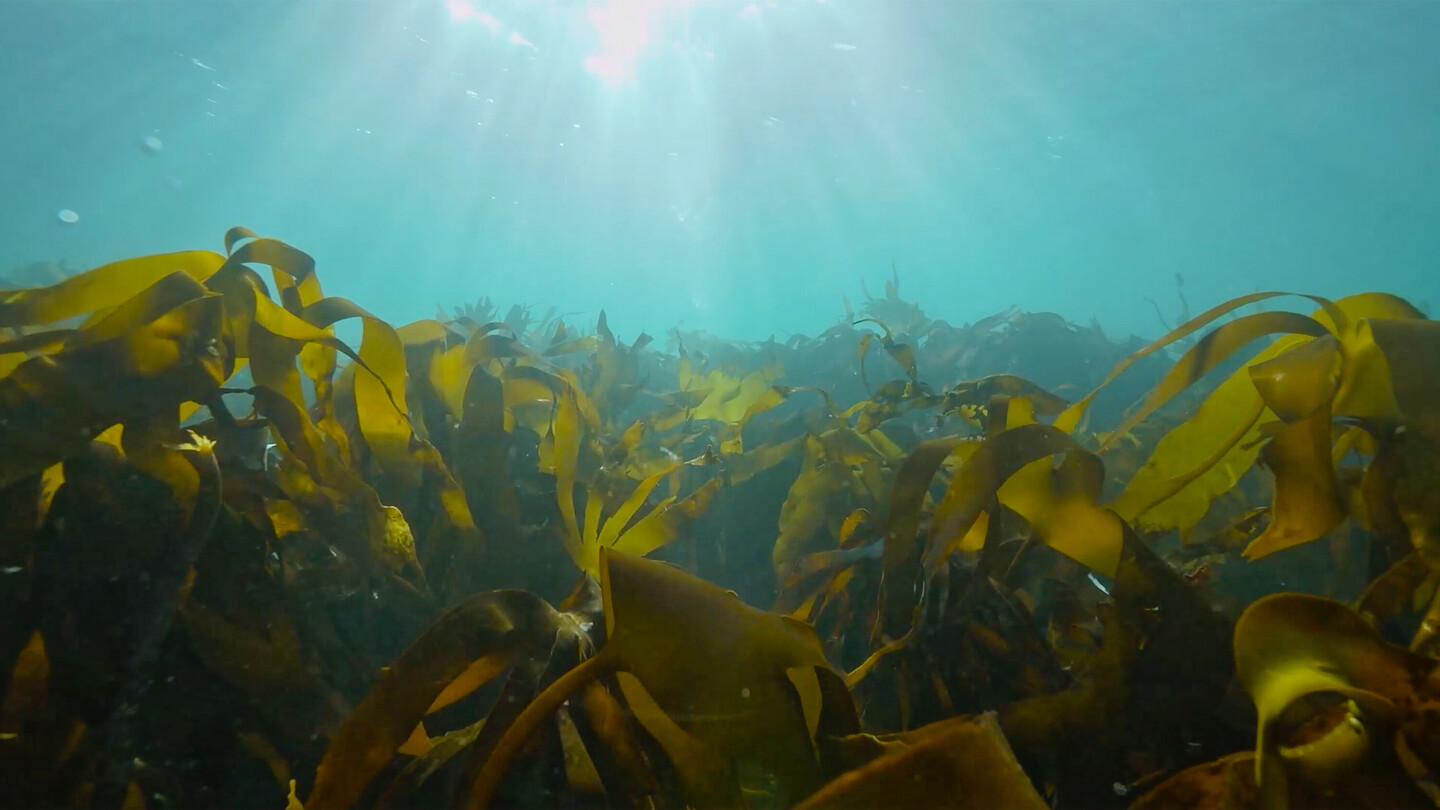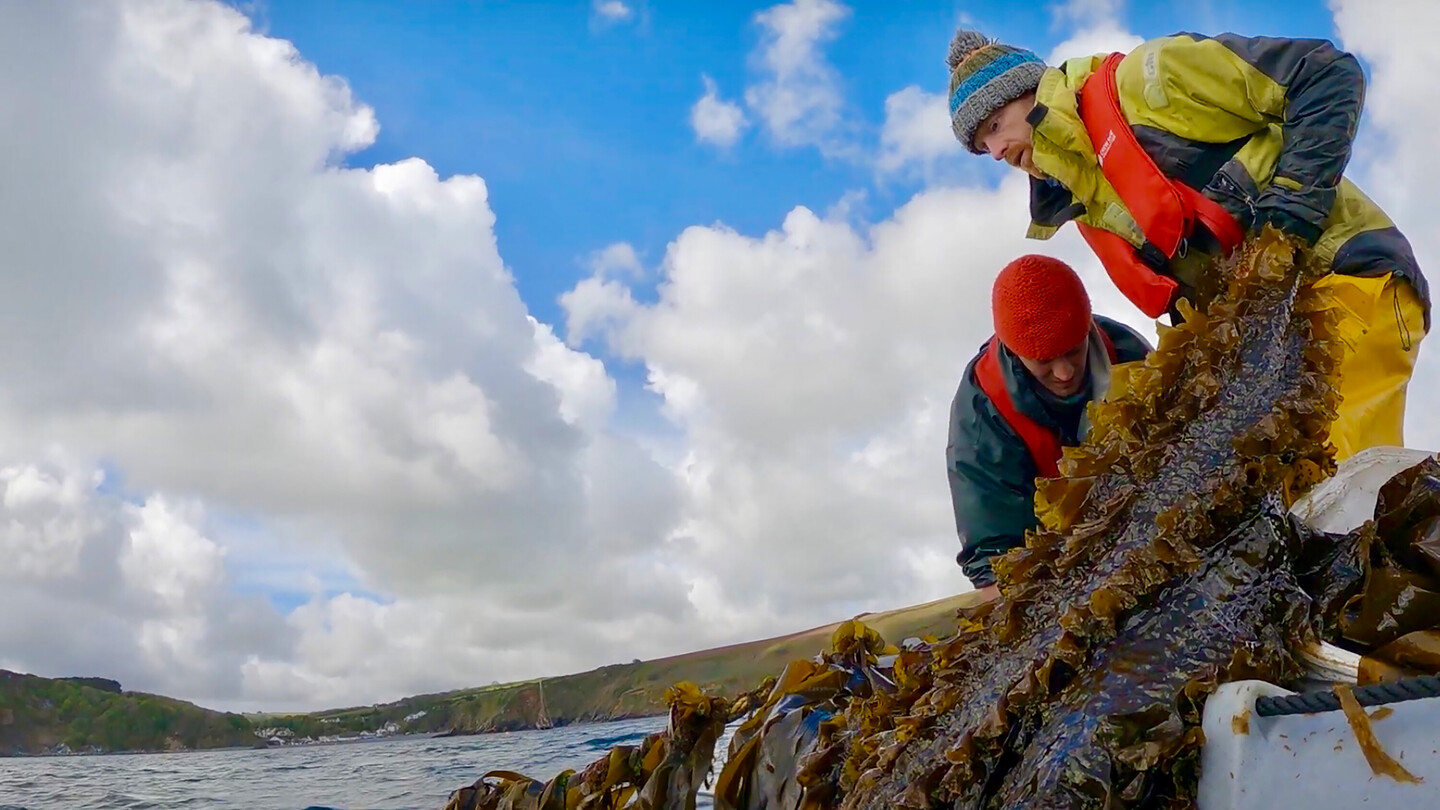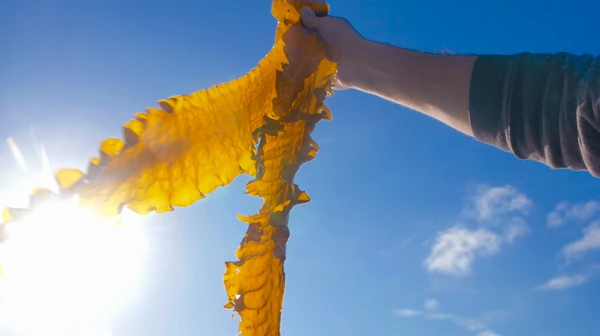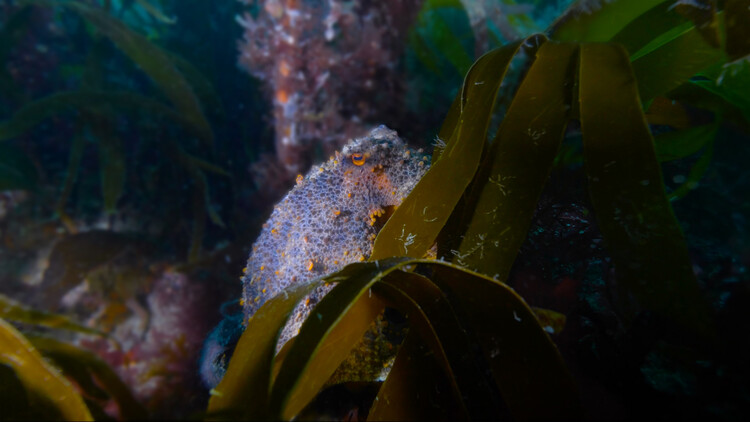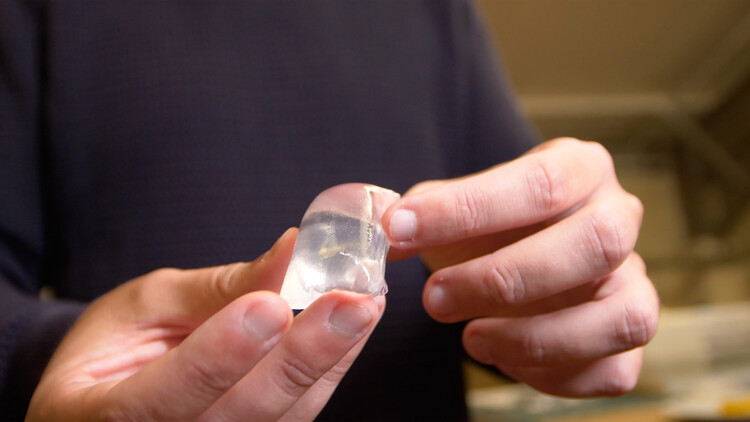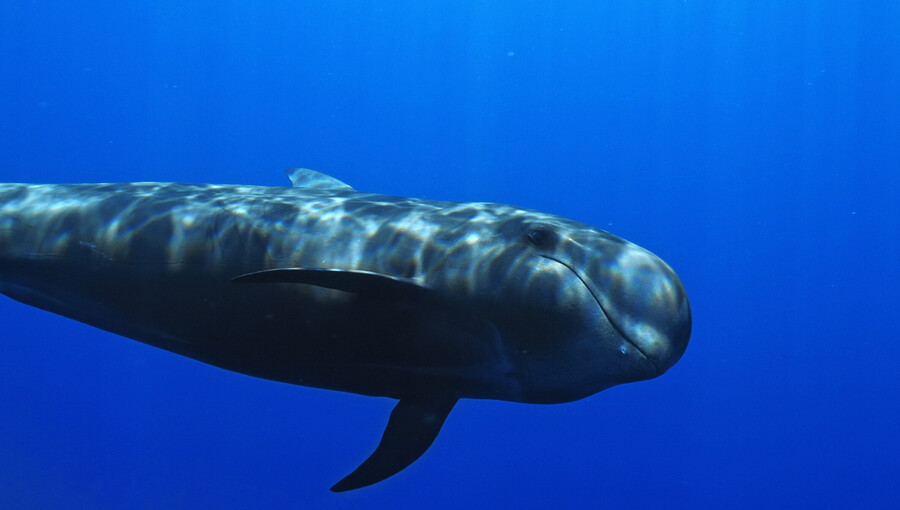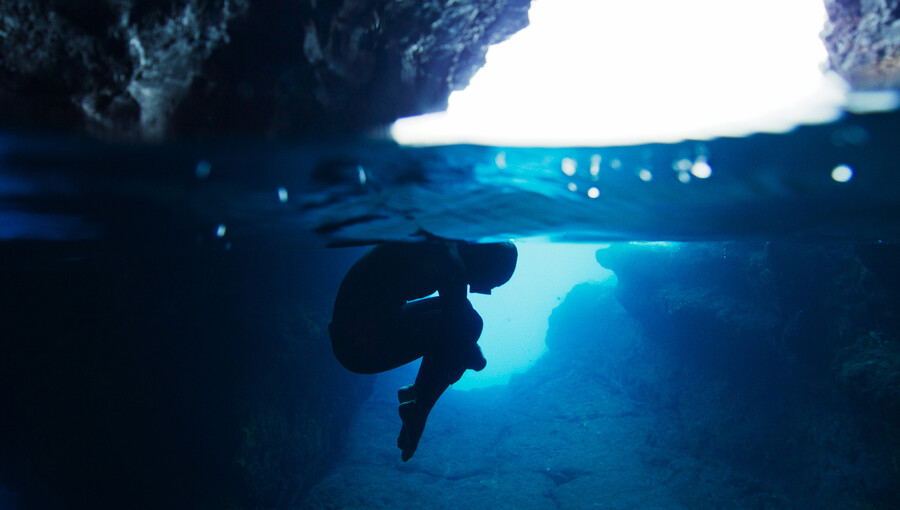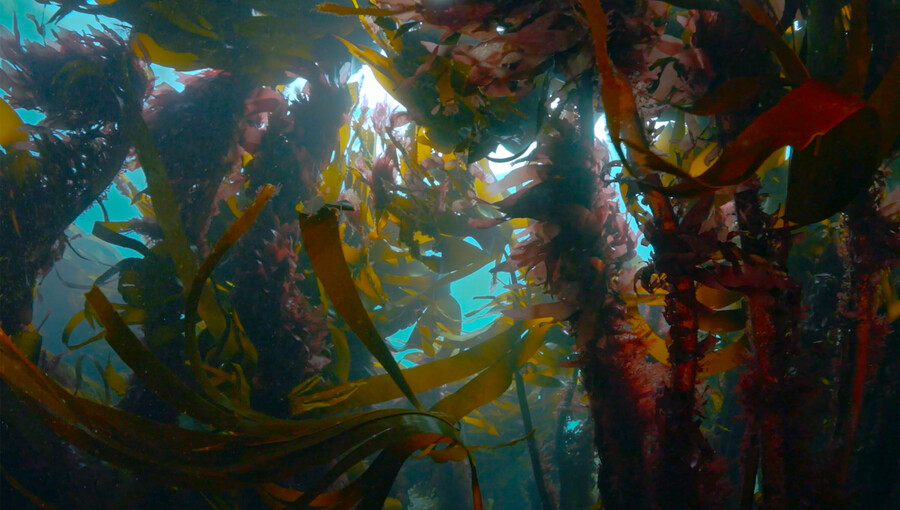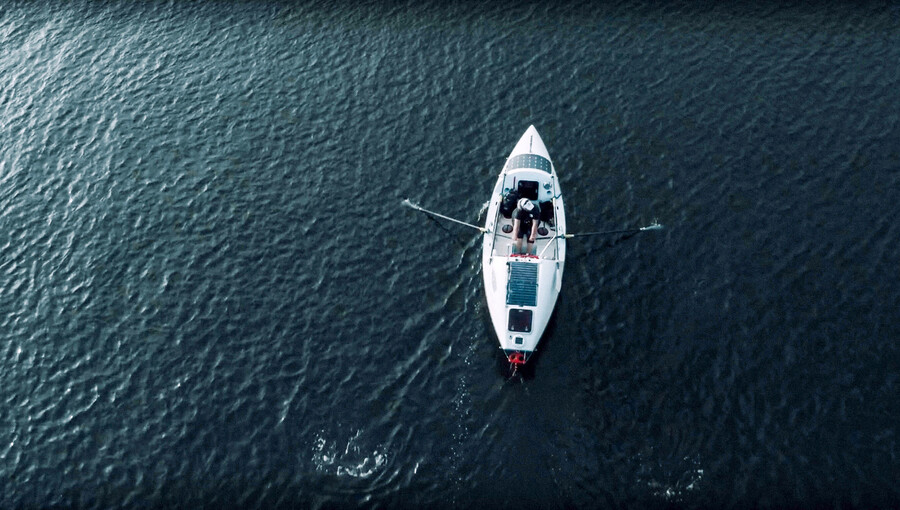
Kelp!
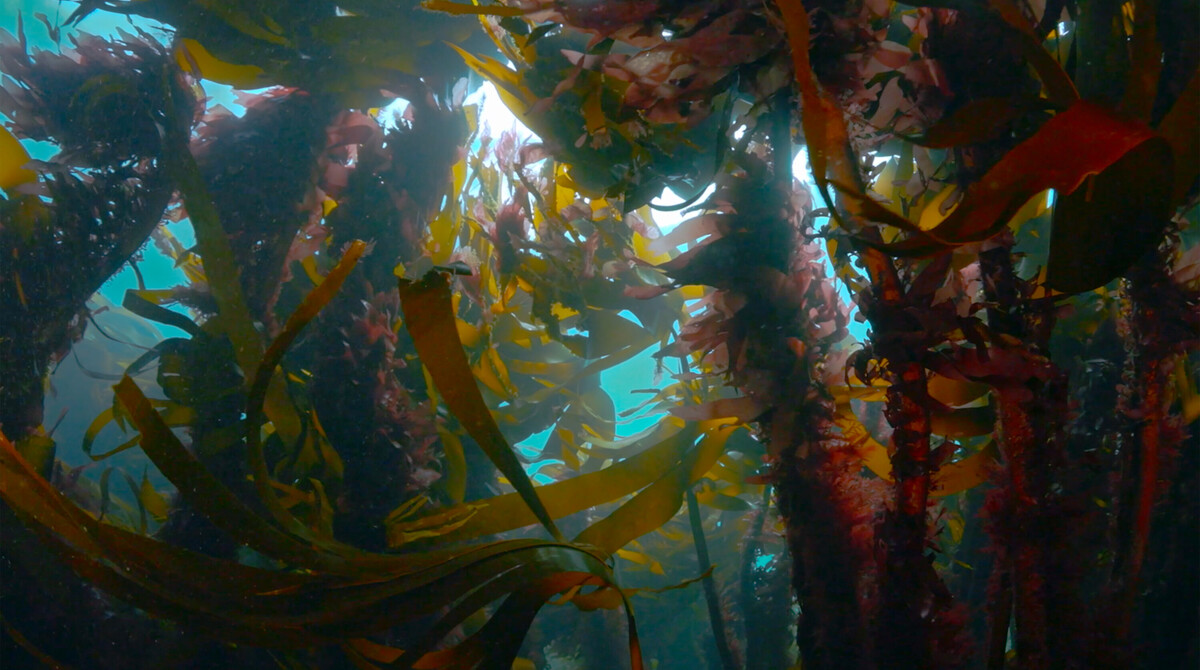
In Search of the Green Gold of the Seas: Aboard the Gleaner, young filmmaker Caylon La Mantia embarks on a quest to discover the hidden treasure of Britain's coastline: KELP!
Her mission? To explore the fascinating world of this remarkable marine algae. Among the rugged cliffs of the British coast, the team encounters inspiring visionaries and uncovers a surprising truth: in the fight against climate change, kelp might just be our greatest ally.
I want to believe that there really are solutions because I struggle a lot with feeling like we’re just doomed (facing climate change)– and then I discovered kelp.
Film Facts
| Length: | 15 min |
|---|---|
| Direction: | Caylon La Mantia, Anna Roberts |
| With: | Caylon La Mantia,Pierre Paslier (NotPla), Kate Burns, Francois Buyers, Izzy Carvet, Jacob Guy, Fabio De Maddalena, Kathryn Sainsbury-Wilkes, Matt Hill, Harrison Wood, Matt Roseveare |
| Production: | 2022, UK, KELP! film and production team |
As well as restoring and protecting wild kelp forests, coastal areas throughout the world are seeing the development of kelp farms, where kelp is grown on ropes suspended in the water column giving multiple harvests each year.
In the search for sustainable solutions to global challenges, farmed kelp has proven to be a true all-rounder in service of human life on our planet. Their cultivation requires no freshwater, fertilizers, or land use—an outstanding example of sustainable resource management. The range of its applications is impressive: from the production of high-quality food and use in cosmetics and pharmaceuticals to the development of biodegradable packaging. Pioneering companies like NotPla are already demonstrating how kelp-based materials can offer an eco-friendly alternative to conventional plastics.
Current research projects are exploring kelp’s potential for biofuel production, its use in sustainable agriculture, and its application as an innovative material of the future. This extraordinary versatility, combined with its ecological benefits, makes it a promising solution for the sustainable development of our coastal regions and oceans.
